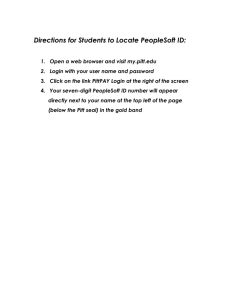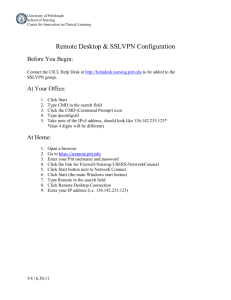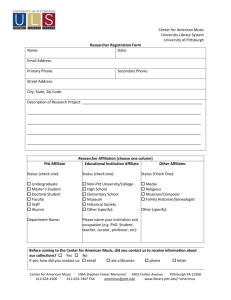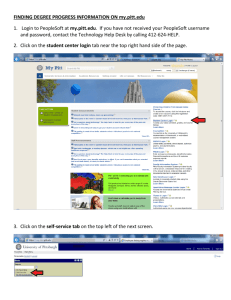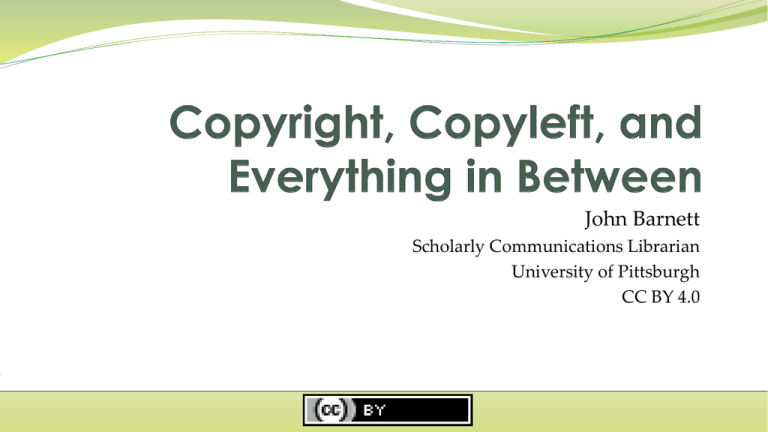
John Barnett
Scholarly Communications Librarian
University of Pittsburgh
CC BY 4.0
Our goals
Information to help you understand copyright and fair use
Public domain
Copyleft
Open access
Resources to go (pro tips)
Some scenarios to test your thinking
Your turn
But first, a disclaimer . . .
I’m a librarian, not a lawyer
I can offer ideas, suggestions, and opinions
This is most definitely not legal advice
It is, however, professional guidance
I’m learning, too
Pro tip #1: SC glossary
http://www.library.pitt.edu/oscp/glossary
Copyright & other intellectual property
Librarians and libraries deal with this a lot
Contracts for electronic resources
Donor agreements for archives and special collections
Public performance rights for video
Face-to-face teaching
Distance education
Citation and reuse of others’ works
Fair use
Advice, no; help, yes
Generally, librarians can only suggest or guide
We cannot and should not give legal advice
Others may be able to help
Your professor
Computing and technology services
Instructional development and distance education
General counsel
A copyright or contract law specialist
Often librarians are a good starting place
Pro tip #2: Pitt copyright resources
The ULS’s Office of Scholarly Communication and Publishing copyright
and intellectual property resources page
The ULS’s copyright FAQs
HSLS (Falk Library) resources on scholarly communication
Pitt’s policies on copyright and intellectual property
Center for Instruction Design and Distance Education (CIDDE)
Pitt Office of General Counsel
Copyright: The basics
A form of intellectual property law, grounded in the U.S. Constitution
Right of authors* to control use of their works for a limited time
Also established to promote creativity and learning
Covers both published and unpublished works
Covers “original works of authorship fixed in a tangible medium of
expression”
Copyright notice is no longer required—but it may be wise to affix one
Copyright registration is no longer required—but it can be helpful
*Assuming that the author is the one who owns the copyright
What’s protected, what’s not
Protected—
Original works of authorship including
Literary, dramatic, musical, and artistic works
e.g., poetry, novels, movies, songs, computer software, architecture
Not protected—
Facts, ideas, systems, methods of operation
(although it may protect the way these are expressed)
Names, titles, slogans, or short phrases (although
these may be protected as trademarks)
Kinda, sorta—
Logos—may be protected by copyright if the logo
artwork contains sufficient authorship
Or an artistic logo may also be protected as a trademark
You have the right to . . .
Reproduce the work in copies and “phonorecords”
Prepare derivative works based upon the original
Distribute copies of the work to the public by sale or other transfer of
ownership, or by rental, lease, or lending
Perform the work publicly (literary, musical, dramatic, and choreographic
works, pantomimes, and motion pictures and other audiovisual works
Display the work publicly (literary, musical, dramatic, and choreographic
works, pantomimes, and pictorial, graphic, or sculptural works [including
individual images of a motion picture or other audiovisual work]
Perform the work publicly (in the case of sound recordings) by means of “a
digital audio transmission”
Authors’ rights vs. copyright
Authors’ rights belong to the author/creator of a work
Authors can transfer, sell, rent, lease, etc., some or all of those rights to
others
When the rights are transferred, sold, or signed away, the authors’
rights generally* come to an end
The recipient of these rights becomes the copyright holder/owner
* Don’t forget about moral rights for creators!
Pro tip #3: More copyright resources
Copyright Basics (Circular 1 from the U.S. Copyright Office)
U.S. Copyright Office (Library of Congress)
U.S. Copyright Law, Title 17 of the U.S. Code
World Copyright Terms
Digital Millennium Copyright Act (Appendix B, U.S. Copyright Law) –
copyright in the digital environment
Pro tip #4: How long does it last?
It depends (on where and when the work was published)
The short version: Most new works are protected for the life of the
author + 70 years
Works published before 1978 were required to have a copyright notice;
this is no longer the case—but the work is still protected
Works published between 1923 and 1978 could have protection for up
to 95 years
Is It Protected by Copyright? For Works First Published in the U.S.A.
ULS Copyright FAQ
Other concepts
Exclusive vs. non-exclusive rights
Deposits to D-Scholarship@Pitt
“In self-archiving this Work, I grant the University and its agents the non-exclusive
and perpetual license to . . .”
Pitt students who complete ETDs grant a non-exclusive license to the
university to distribute their ETDs
“I hereby grant to the University . . . And its agents the non-exclusive royalty-free
license to archive and make accessible . . .”
Subsidiary rights
Examples: Translations, foreign markets, permissions, formats, etc.
Economic vs. moral rights
The dead parrot sketch
In 1976, Terry Gilliam/Monty
Python claimed ABC violated
copyright and caused damage to
their artistic reputation by
broadcasting drastically edited
versions of their shows
U.S. district and appeals courts
found in favor of the troupe
Case was primarily decided on
the basis of whether the BBC had
the right to let ABC edit the
shows
Why does copyright matter?
Attribution
Be acknowledged for the work you do
Be rewarded for it
Copy
An author may want to make copies of his/her “own” work
But if rights are transferred to another entity, now the new copyright owner has that right
Remix (make derivatives)
Make versions or new editions of the author’s work
Reuse (control, grant permissions)
Authors can give permission on how they want their works to be used or distributed
If those rights are assigned to a publisher, the publisher then determines use and
distribution
Pro tip #5: Keeping up with copyright
Copyright Advisory Office Blog (Columbia University Libraries)
Direct Dispatch: ALA Washington Office Blog
SPARC Blog and SPARC News & Media
Kip Currier Copyright and “Open” Movements Blog
Fair use
The rights of copyright owners are subject to limitations
A fair use of a copyrighted work might include criticism, comment, news
reporting, teaching, scholarship, and research
Four factors for determining fair use
The purpose and character of the use (commercial, nonprofit, etc.)
The nature of the copyrighted work (factual or creative)
The amount and substantiality of the portion used
The effect of the use upon the potential market for, or value of, the work
No one factor outweighs the other
“There is no specific number of words, lines, or notes that may safely be taken
without permission”
Pro tip #5: Determining fair use
Try to learn how to determine fair use on your own—but don’t be
afraid to ask for help
U.S. Copyright Office factsheet on fair use
Thinking through fair use (University of Minnesota)
Fair use checklist (Columbia University)
Other resources to help with images, music, art, and other types of IP
ULS Copyright FAQ on fair use
Scenario 1
You’re writing an essay for your Latin American history class on
immigration to Argentina in the 19th century
You find some great quotes from books in the library, as well as some
from articles online
You want to use some of these quotes in your paper
How many, how much can you use?
The professor who wrote one of the books teaches at Pitt; should you
contact her to ask for permission to use the passages from her book?
Scenario 2
Your friend takes photos of artworks and exhibits she sees at the
National Museum of the American Indian in Washington, DC
She plans to use them in a classroom presentation
Later she wants to use the photos in an article she’s writing, which will
be published in a Pitt ethnology journal
How would you help your friend with fair use?
Scenario 3
You’re making a film for your course on the history of jazz.
You’ve used a lot of still photos you got from the archives and the staff
there have told you that the photos are in the public domain, so it’s OK
to use them in your film, but they’d like you credit where you got them.
You want to add some music to your film and find the perfect piece by
Miles Davis that would go well with your images!
What’s your next step?
Public domain
Intellectual property rights have
expired, been forfeited, or are
inapplicable
Or no rights or license are
claimed, including the right to
attribution
But what about
licensed images,
new recordings,
new editions, new
translations . . . ?
To the left, to the left . . .
Copyleft—an alternative to “all
rights reserved”
Enables authors/creators to apply
copyright terms to their works in
a way that allows others to use,
build upon, and share your
creations while still getting credit
Considered more compatible
with web activities and
communication
Patentleft or Open Patent
Movement
Licenses patents for royalty-free
use
Share alike
Creative Commons
7 licenses
No registration required
Standardized way to give public permission to share and use your
creative work
Not an alternative but a companion to copyright
Pro tip #6: CC licenses
Prot tip #7: Other options
Against DRM License
Design Science License
Free Art License
Open Audio License
GNU General Public License—free
software
Open Source Initiative (OSI)—open
source software
HESSLA (Hacktivisimo EnhancedSource Software License
Agreement)—ethical restrictions on
the use and modification of
software
Open access to research
Open access literature is digital, online, free of charge, and free of most
copyright and licensing restrictions.
Peter Suber, Open Access. MIT Press. 2012
Pro tip #8: All about OA
ULS Open Access LibGuide
OA explained, origins, resources, tools
Open Access Week
An international commemoration of OA
Open Access by Peter Suber
Culture Change in Academia: Making Sharing the New Norm
Presentation by Erin McKiernan, neuroscientist
Your turn
John Barnett
Scholarly Communications Librarian
Office of Scholarly Communication and Publishing
University Library System, University of Pittsburgh
jhb23@pitt.edu or oscp@mail.pitt.edu
Twitter: @OSCP_Pitt
Sources
American Psychological Association. (2010). Protecting intellectual property
rights. In Publication manual of the American Psychological Association (6th ed.,
pp. 18-20). Washington, DC: Author.
Crews, K. (2006). Copyright law for librarians and educators: Creative strategies
and practical solutions (2nd ed.). Chicago: American Library Association.
Strong, W. (2010). Rights, permissions, and copyright administration. In The
Chicago manual of style (16th ed., pp. 155-197). Chicago and London: University
of Chicago Press.
Suber, P. (2012). Open access. MIT Press. http://mitpress.mit.edu/books/openaccess
U.S. Copyright Office. (2012). Copyright basics (Circular 1). Washington, DC:
Author. Retrieved from http://copyright.gov/circs/circ01.pdf

